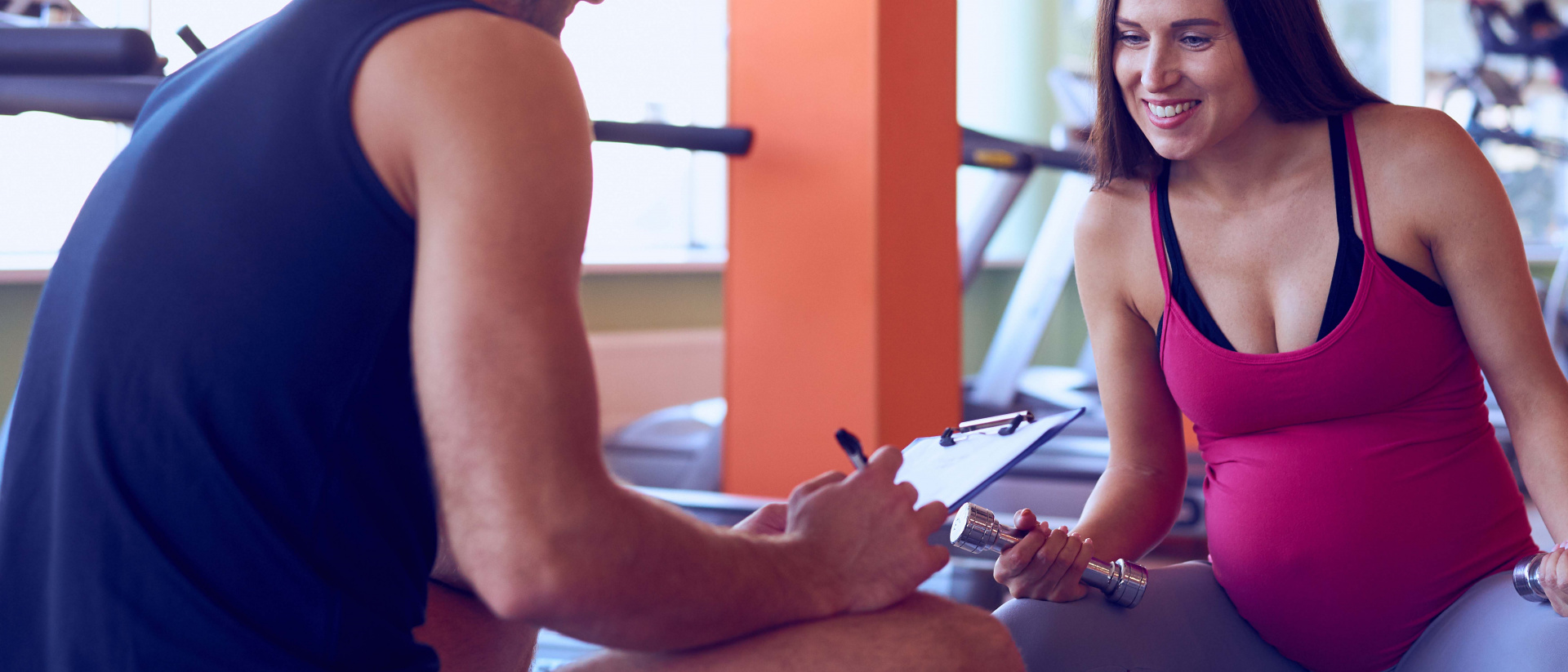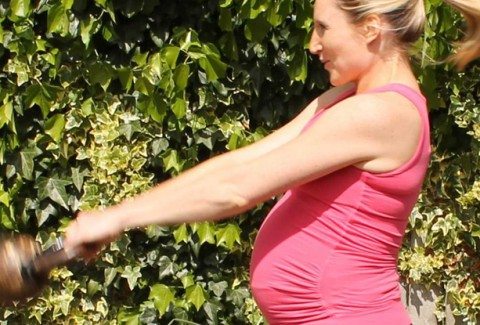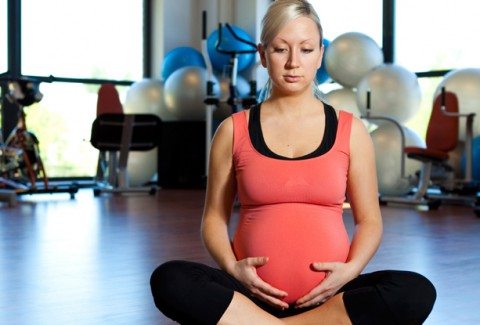We’ve come a long way in research regarding women’s pre and postnatal health. At one point in history, women were forced to stay bed bound throughout their pregnancy, thankfully now things are a little different.
However, there is still a lot of progress to be made, we are moving forward as more and more women are being encouraged to continue exercising during their pregnancy.
Benefits of exercise during pregnancy
For most people, there are both physical and mental benefits to exercise and movement. But during pregnancy in particular, exercise is crucial to the wellbeing of both the mother and baby. Here are some of the top benefits of training during pregnancy:
Reduces gestational diabetes
Gestational diabetes is a type of diabetes that only occurs during pregnancy and is caused by high blood sugar. It is most common in the second and third trimester and can cause complications post birth. However, if discovered early it can be well managed.
If someone gets gestational diabetes during their pregnancy then they are prone to developing diabetes postpartum. Children are also more at risk of type 2 diabetes. Women who were physically active during their pregnancy showed substantially lower rates of gestational diabetes than those that didn’t.
Lower gestational weight gain
Weight gain is inevitable during pregnancy and no one should worry about this, the aim should not be to look a certain way, but maintain a healthy and balanced lifestyle. A study found that women who stayed physically active during pregnancy gained 20% less weight than those who remained inactive. Likewise, women who gain more weight than recommended during pregnancy were significantly heavier long term than those who continued to exercise.
Improved mental health
Exercise has been proven in various studies to improve mental health. During pregnancy, mental health problems are prevalent due to the change and fluctuation in hormones which can impact mood. It is also a major life event and this can affect people differently. A study showed that women who exercised during pregnancy had lower scores on a test measuring symptoms of depression.
Exercise contraindications
A contraindication is a reason why someone should not take part in certain activities. Although the majority of women can continue to exercise throughout pregnancy, there are some reasons why they may not be able to. There are absolute contraindications where the participants definitely should not be exercising, and relative contraindications where they should get sign off from a medical professional first and these symptoms should be watched carefully.
Absolute Contraindications
- Restrictive lung disease
- Incompetent cervix
- Multiple gestation at risk of premature labour
- Hemodynamically significant heart disease
- Ruptured membranes
- Severe anaemia
- Premature labour during current or previous pregnancies
- Pre-eclampsia/pregnancy induced hypertension
Relative contraindications
- Chronic bronchitis
- Poorly controlled type 1 diabetes
- Anaemia
- Unevaluated maternal cardiac arrhythmia
- Extreme morbid obesity
- Extreme underweight
- History of extreme sedentary lifestyle
- Heavy smoker
- Orthopaedic limitations
- Intrauterine growth restriction in pregnancy
Training considerations
First of all, always make sure that your client has clearance to exercise from their medical professional, especially if they didn’t exercise before pregnancy. Some of the contraindications aren’t always obvious, so it’s good to play things safe and get the go ahead from a doctor/midwife first.
During pregnancy the hormone relaxin is produced to help soften the pelvis in preparation for childbirth. However, areas around the pelvis such as hips and lower back also become more lax. Because of this, there might be an increased risk of injury and should avoid stretching for long periods of time. Stability work such as resistance training and Pilates can help improve joint stability.
Another consideration during pregnancy is focusing on the pelvic floor muscles. A combination of weight gain and excess spinal lordosis can put more pressure on the pelvic area. Pelvic floor exercises should be practised to protect this area of the body and will reduce the likelihood of leakages.
One of the most important things to remember is that pregnant women should be focusing on maintaining fitness rather than optimal performance. Unless it’s an elite athlete who needs to perform at their best, during pregnancy isn’t the time to be trying to smash PBs or shave time off an event. Exercise should be an enjoyable part of the process of being pregnant and a tool to aid a more comfortable birth.
Activities to avoid during pregnancy
In terms of specific sports, pregnant women should avoid any contact sports such as boxing, martial arts or basketball. Another area to avoid is sports where you can potentially fall, including horse riding, skiing and mountain biking.
During pregnancy, although women are able to control their temperature by sweating, there’s no way to monitor the temperature of the baby, therefore you should avoid hot yoga or anything performed in a hot temperature where there is the possibility of overheating. After the first trimester as specifically after 16 weeks any exercise involving lying supine (on your back) should also be avoided.
When to stop exercising
Exercise can be incredibly beneficial during pregnancy, that being said some precautions need to be taken. If any of the below occur during exercise then it is advised that they stop immediately:
- Dizziness
- Headache
- Chest pain
- Vaginal bleeding
- Painful contractions
- Calf pain or swelling
- Amniotic fluid leakage
If you are ever unsure about symptoms your client is experiencing during exercise then they should speak to a medical professional as soon as possible.
Recommended exercises during pregnancy
Although everyone has different training goals, there are certain things that pregnant women might want to consider implementing into their training programme. Due to the shift in their centre of gravity, there is a prevalence of lower back pain in pregnant women. One of the ways to try and combat this is to focus on glute and core exercises. Some examples include:
- Hip Bridges
- Standing abduction
- Romanian deadlifts
- Deadlifts
- Monster walks
- Bird dogs
- Plank to downward dog
Working on big compound movements and core stability will also help once the child is born. After birth, the mother will be constantly lifting and carrying the weight of the baby that will constantly increase and you need to be able to manage this. This is why movements such as deadlifts are so important as they will be used to picking up load from the floor.
Training prenatal clients can be an incredibly rewarding experience. Although precautions should be taken, it should also be fun for both you and the client. Make sure before taking on a prenatal client that you are qualified to do so, by completing a pre and postnatal exercise instructor course. This article covers the basics of prenatal training, however a deeper understanding is essential for those who wish to work with women during their pregnancy.






